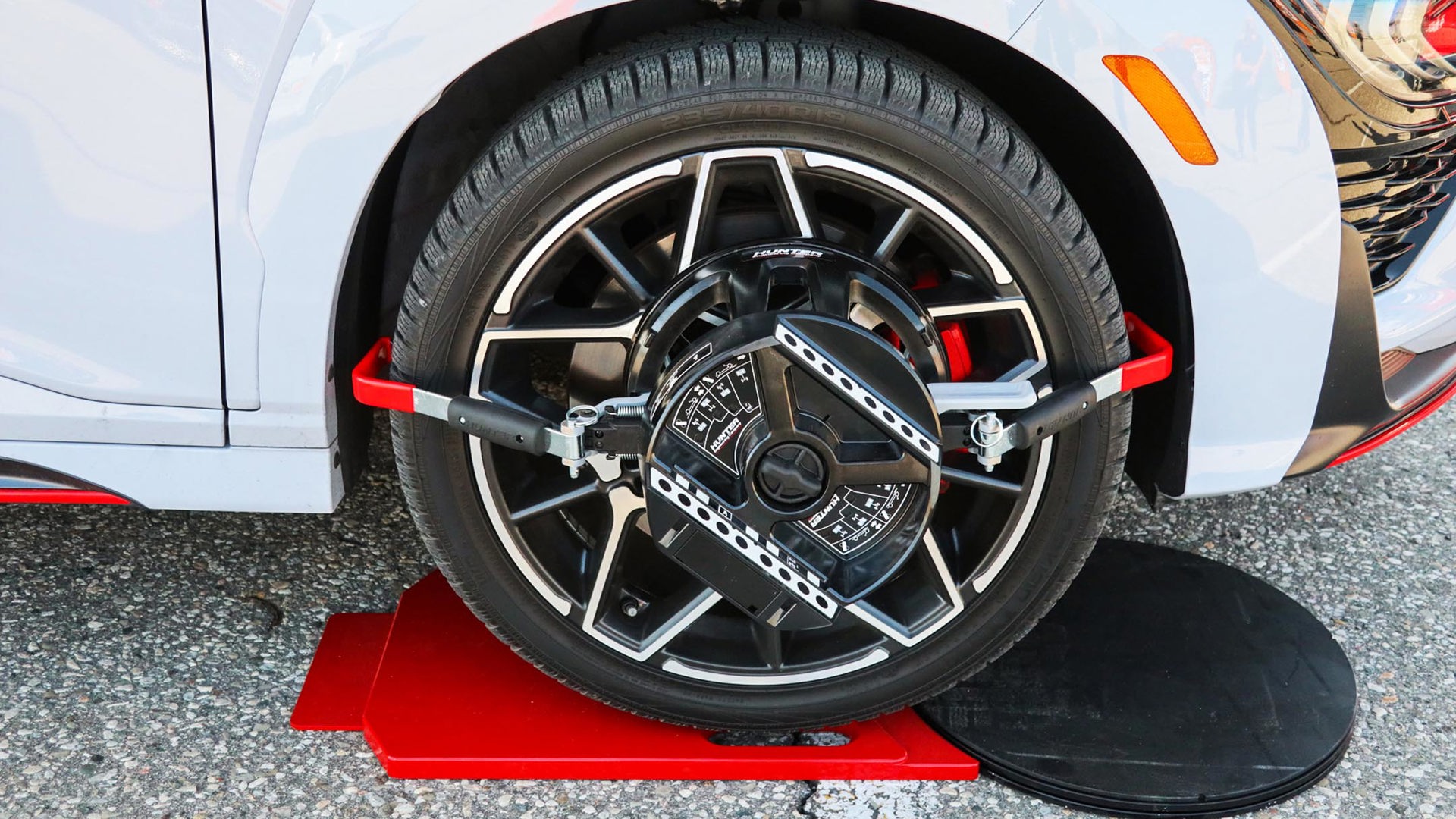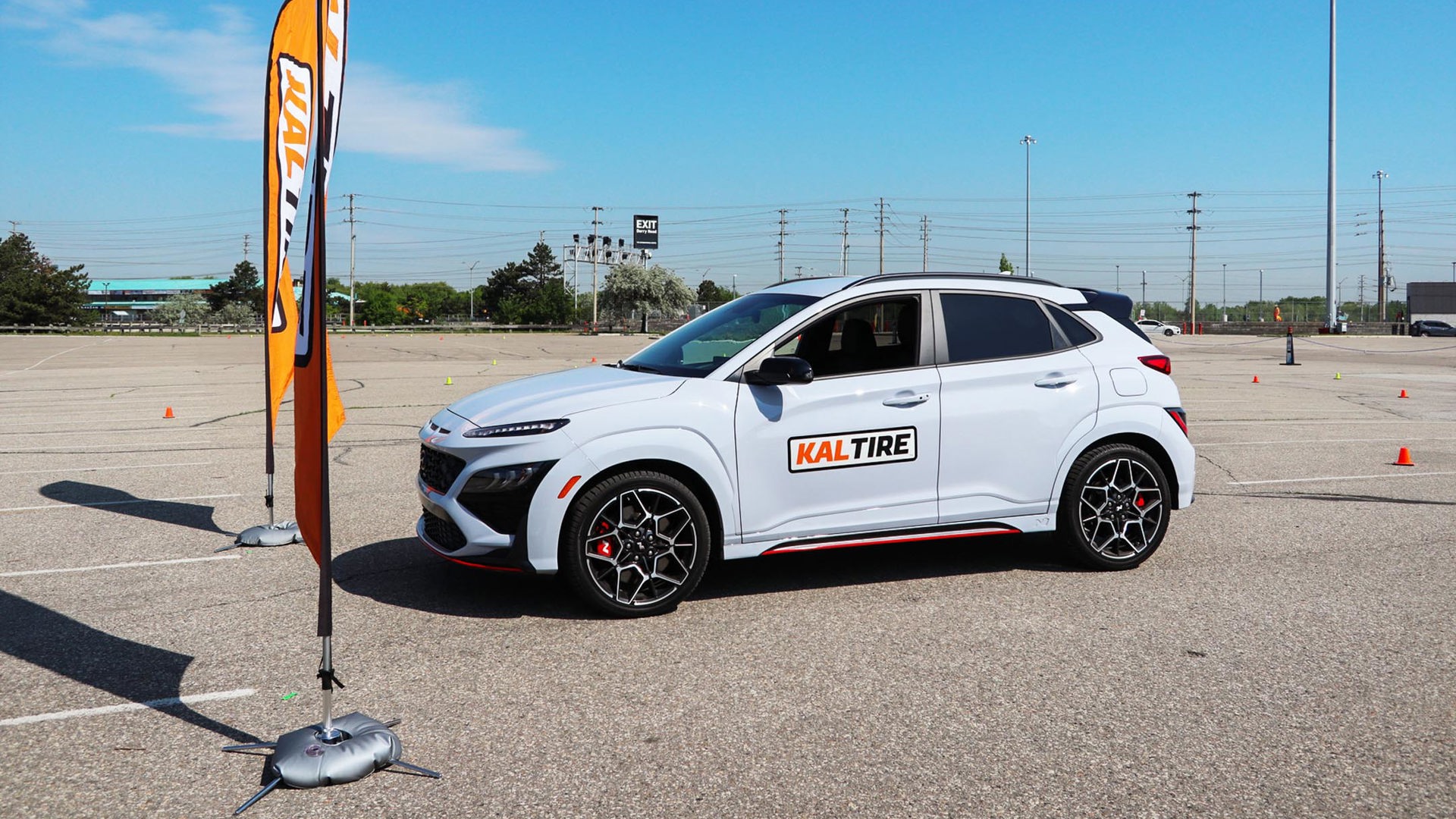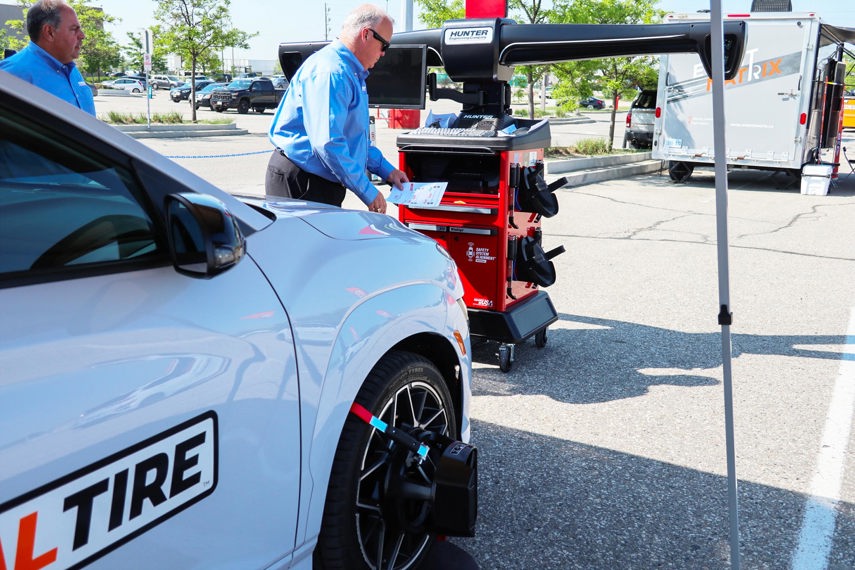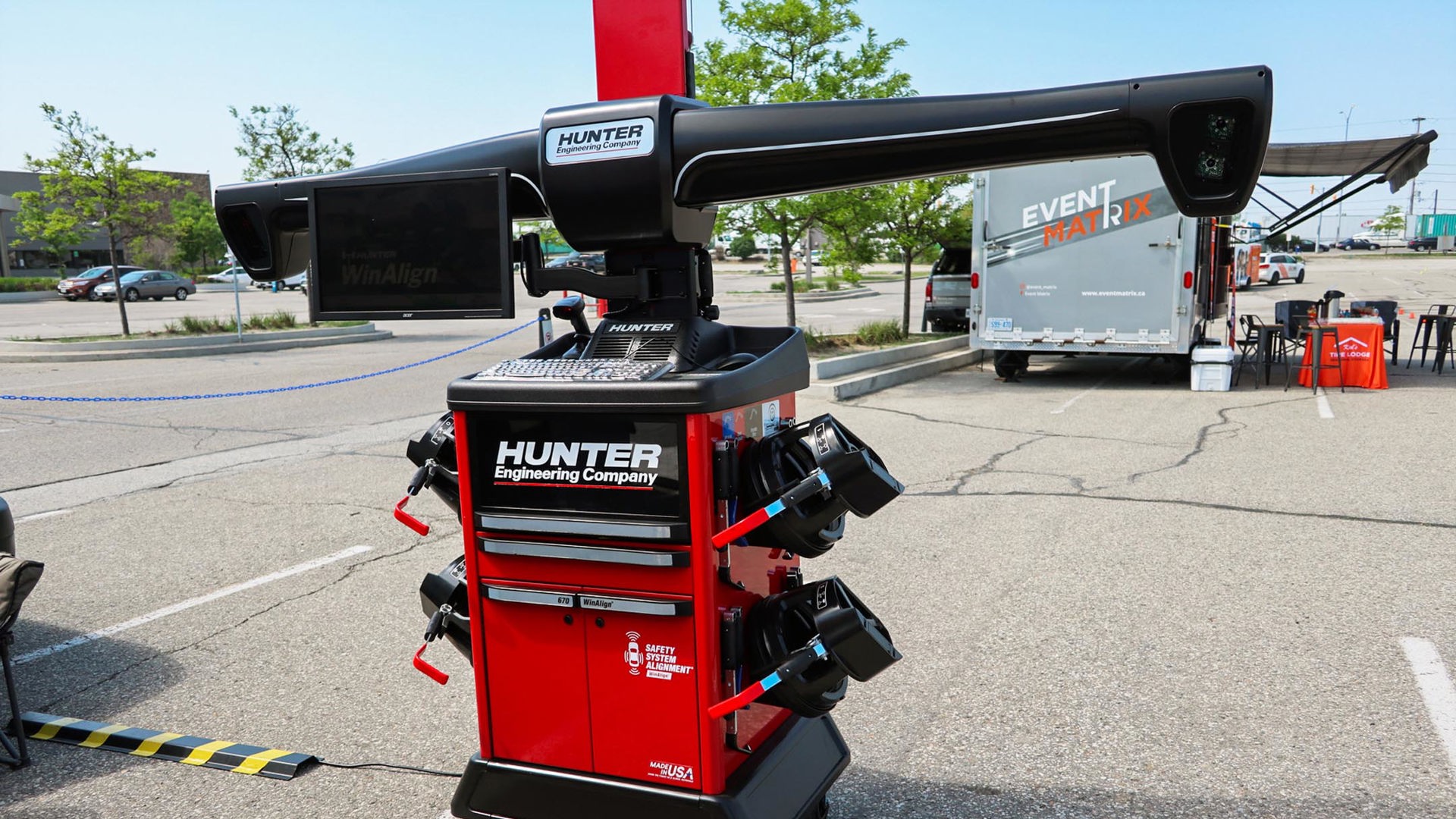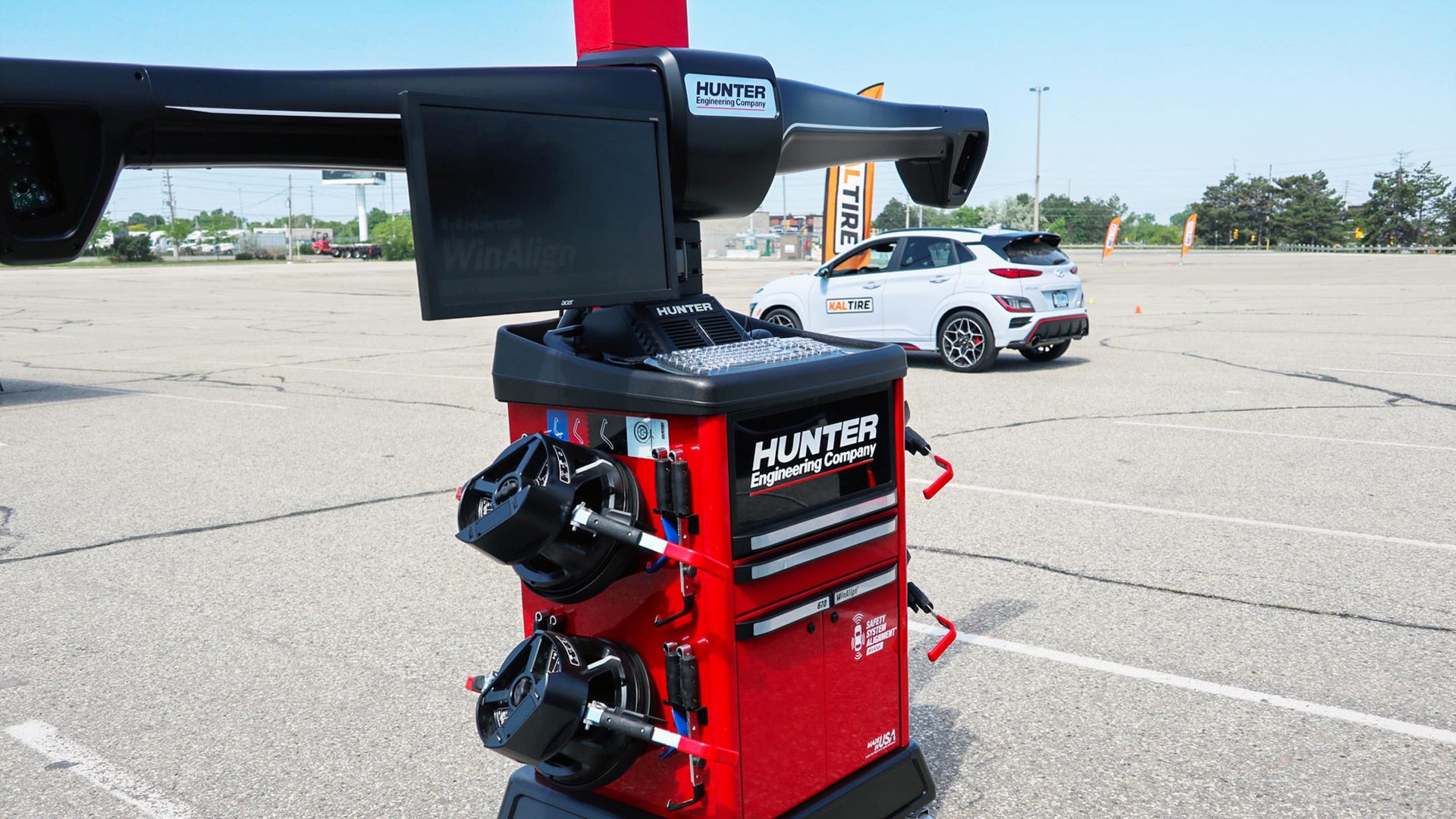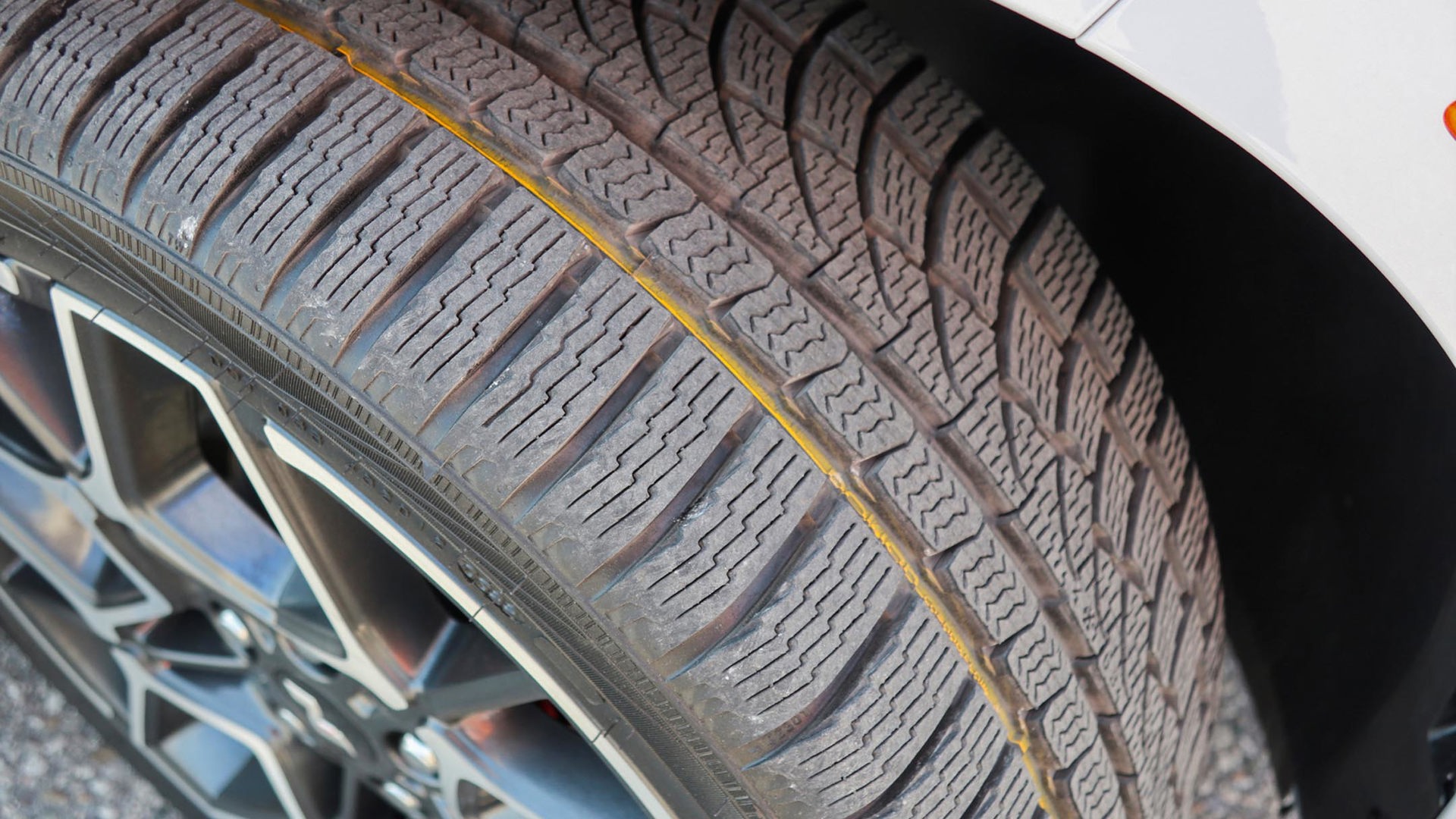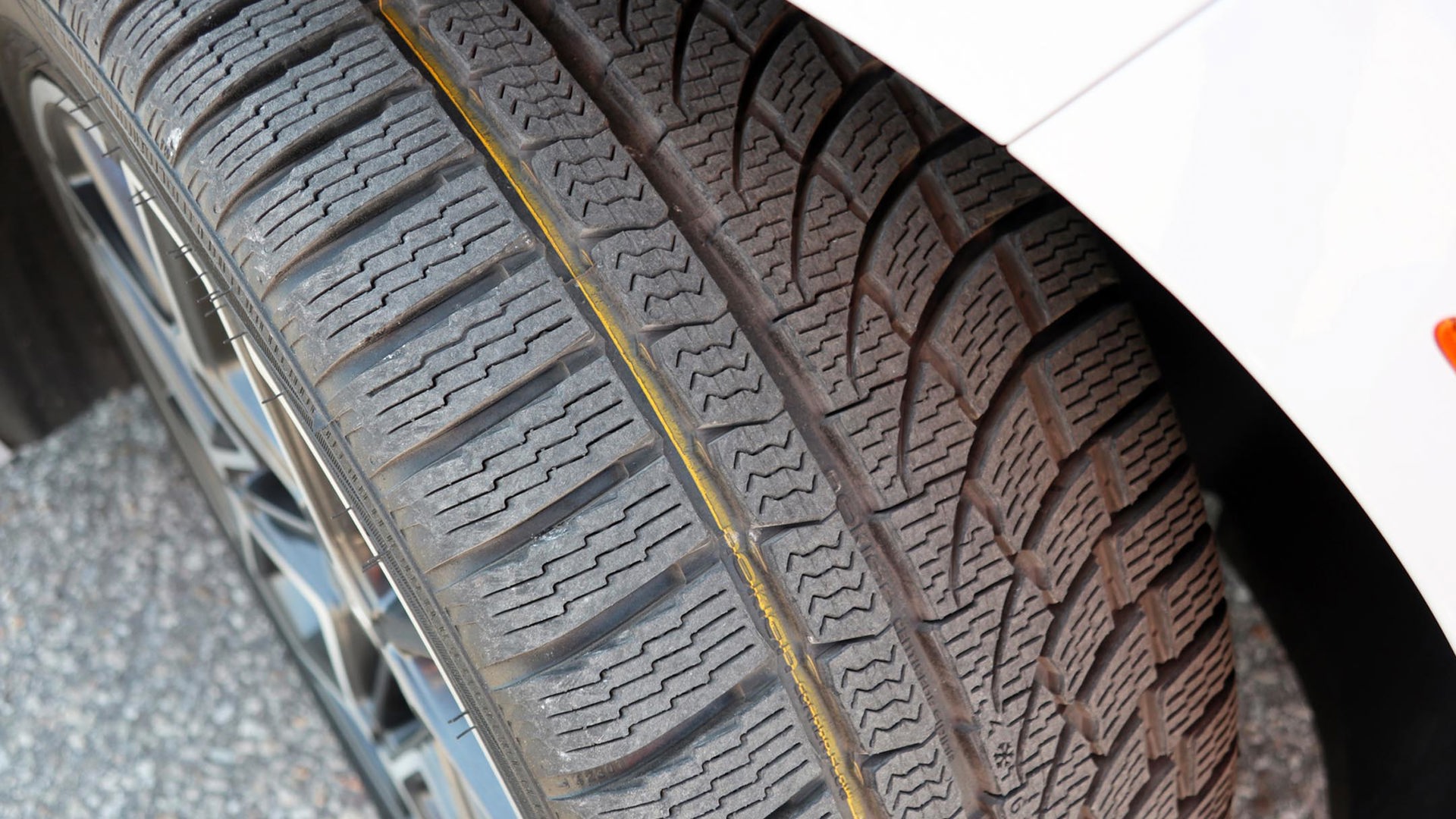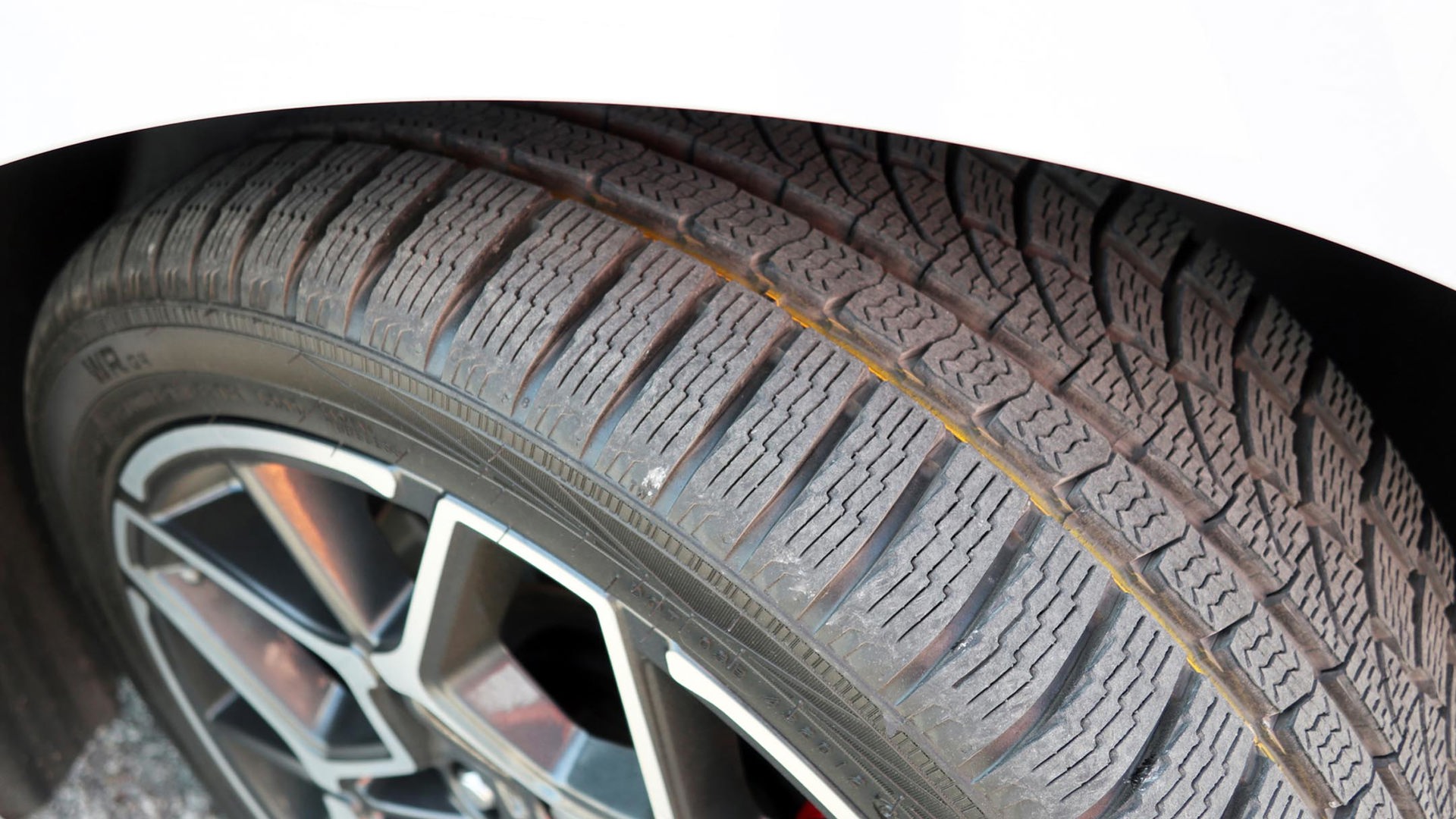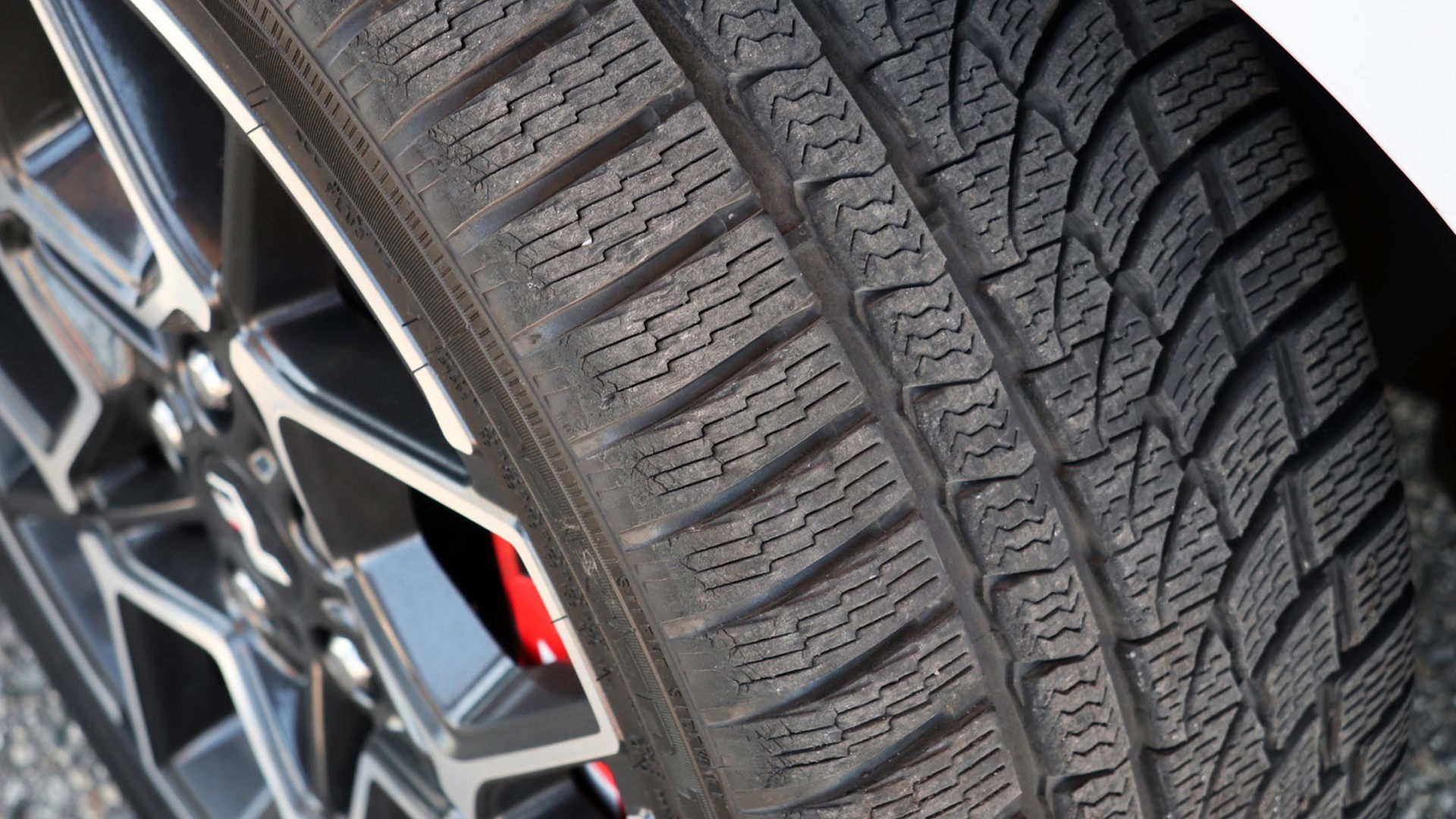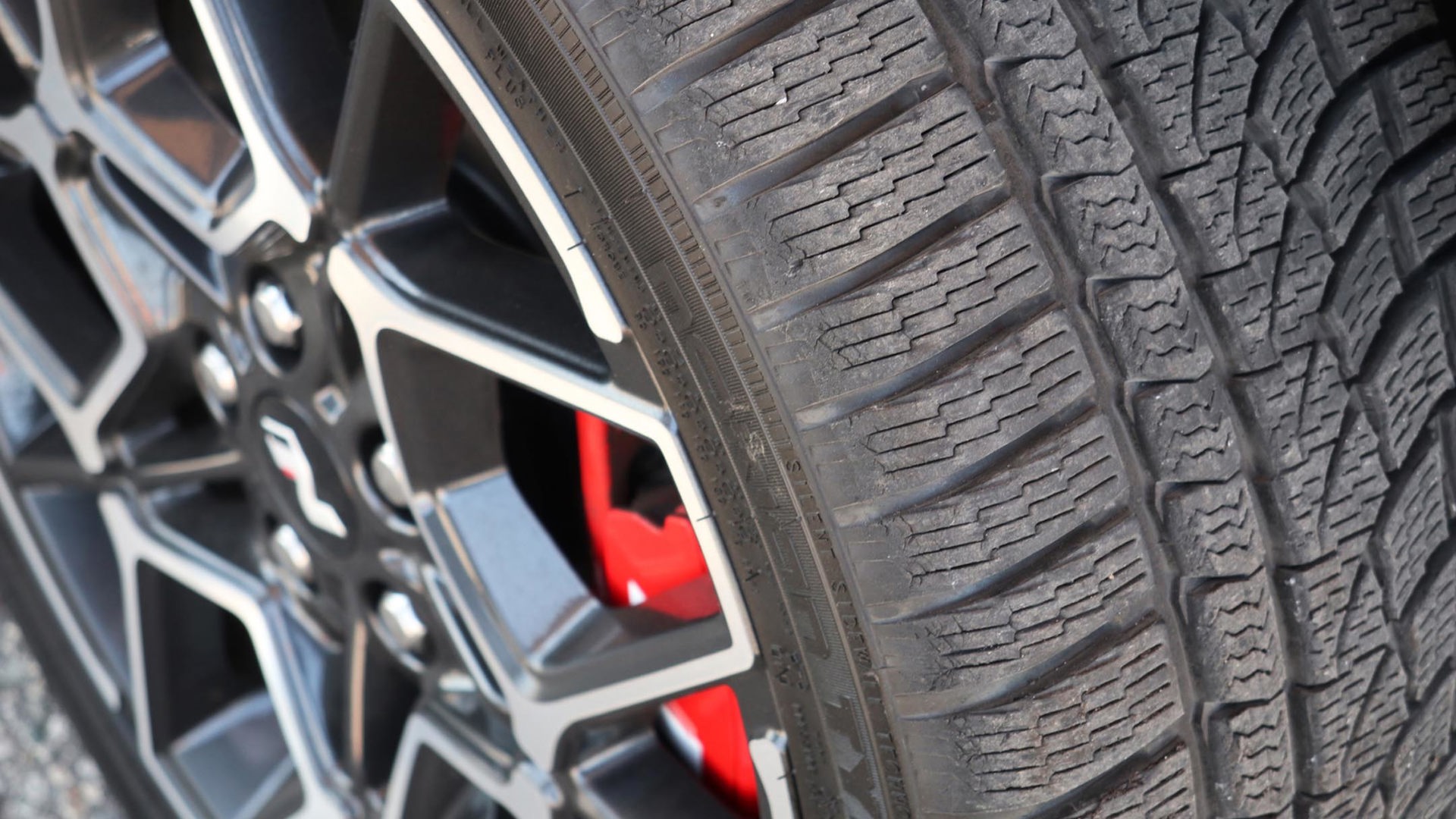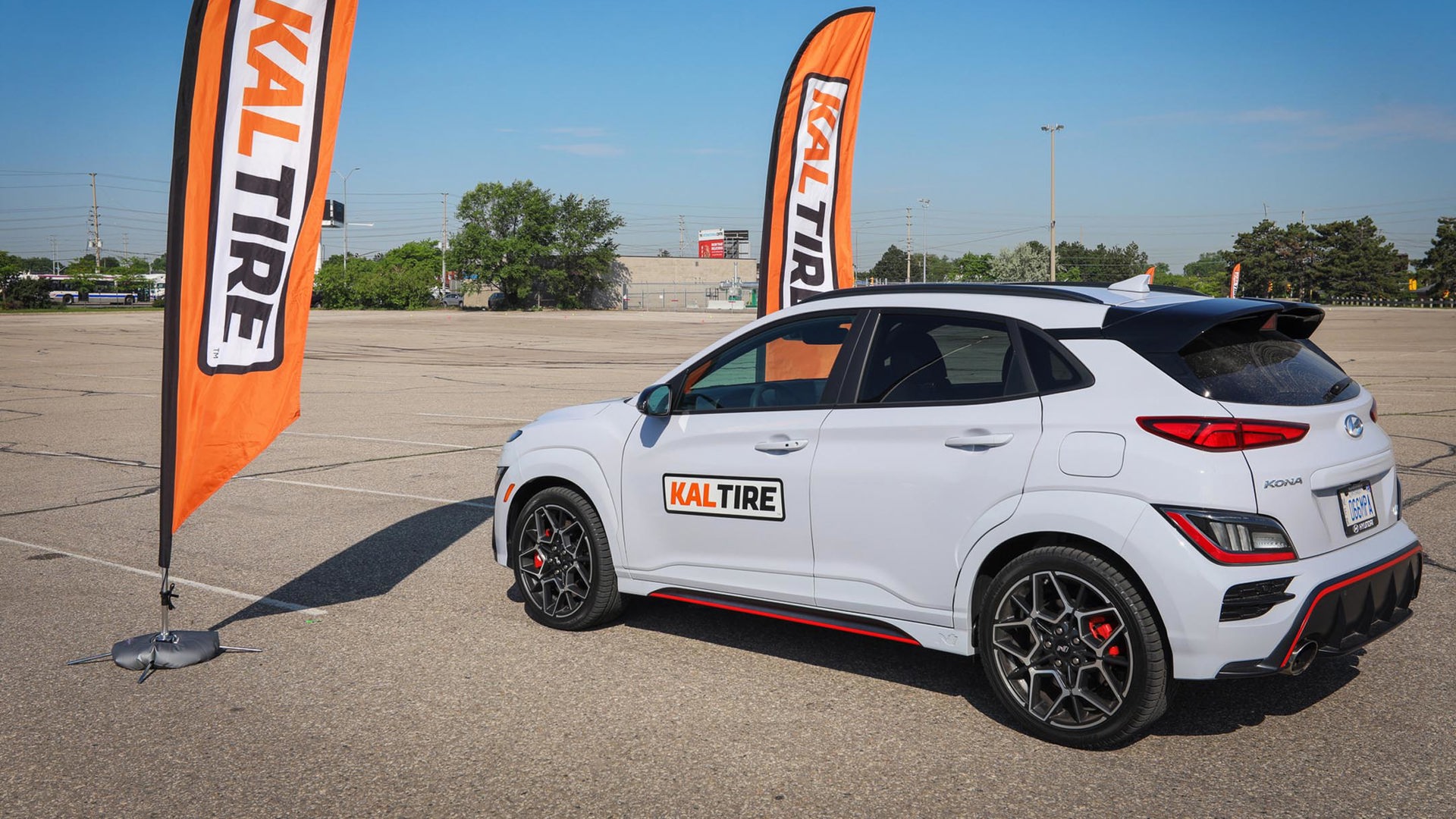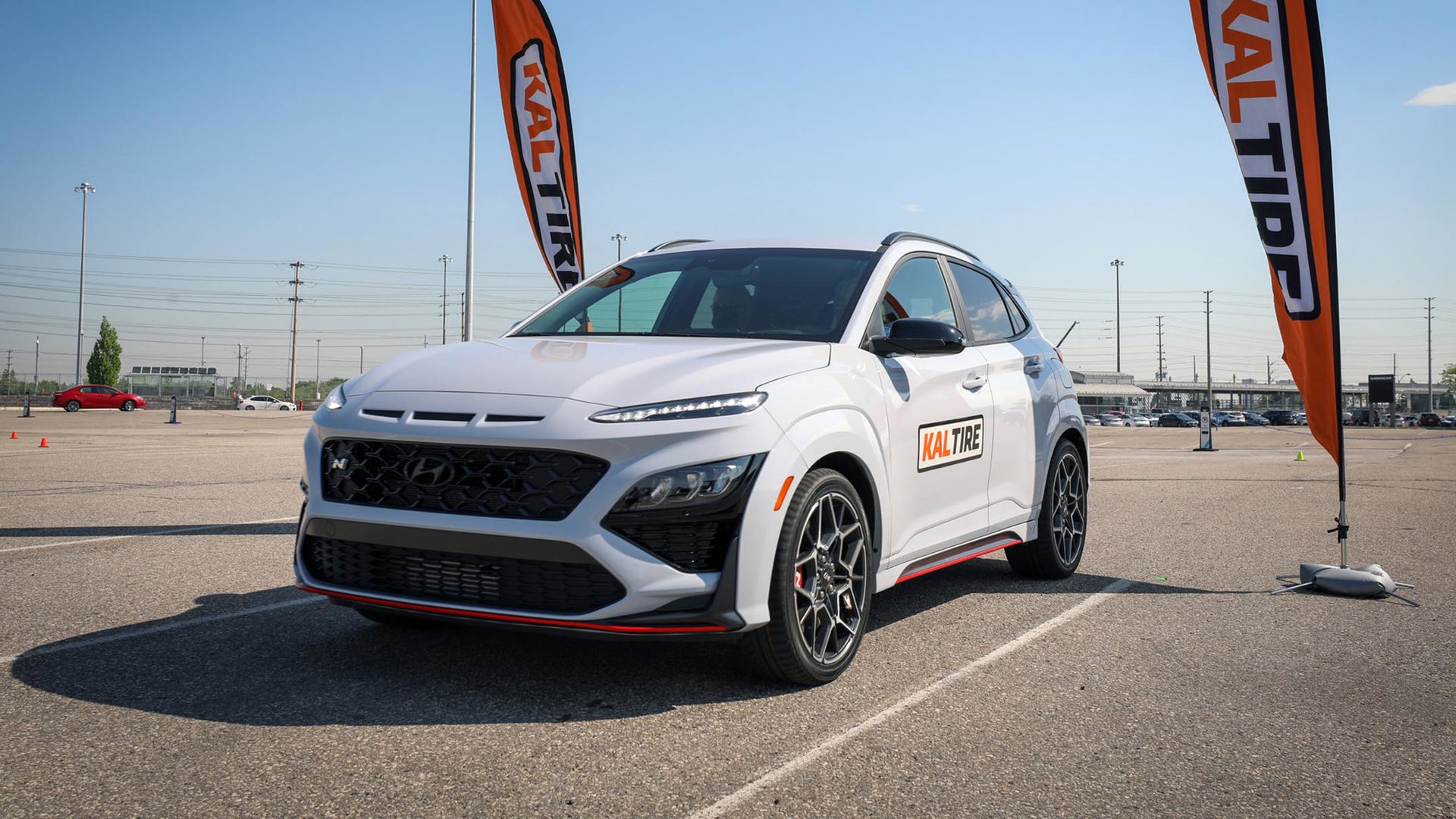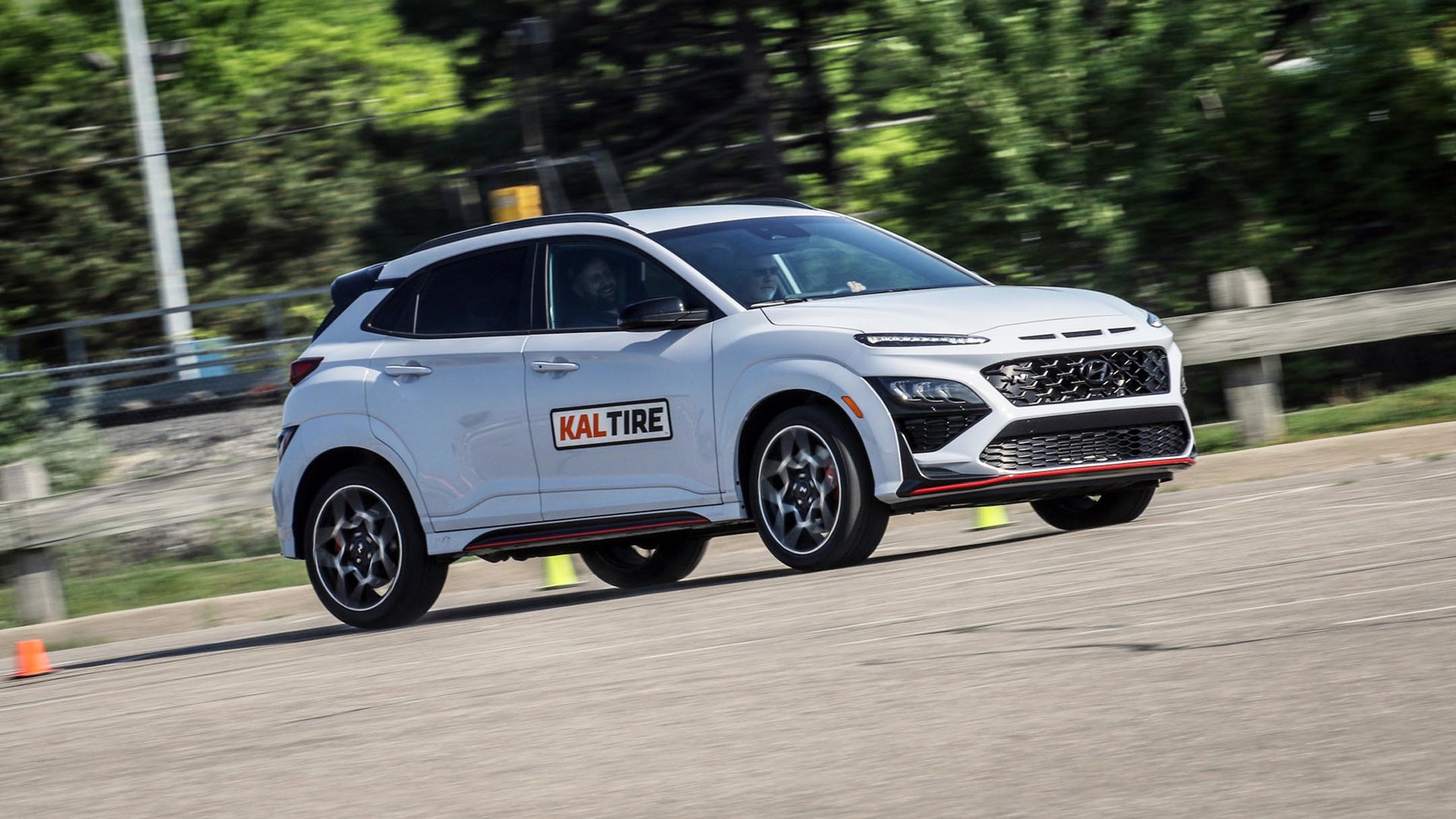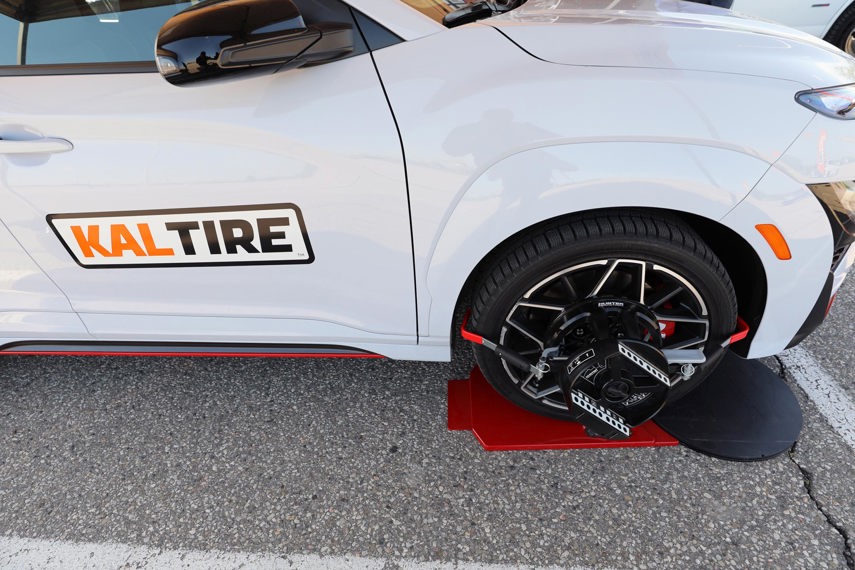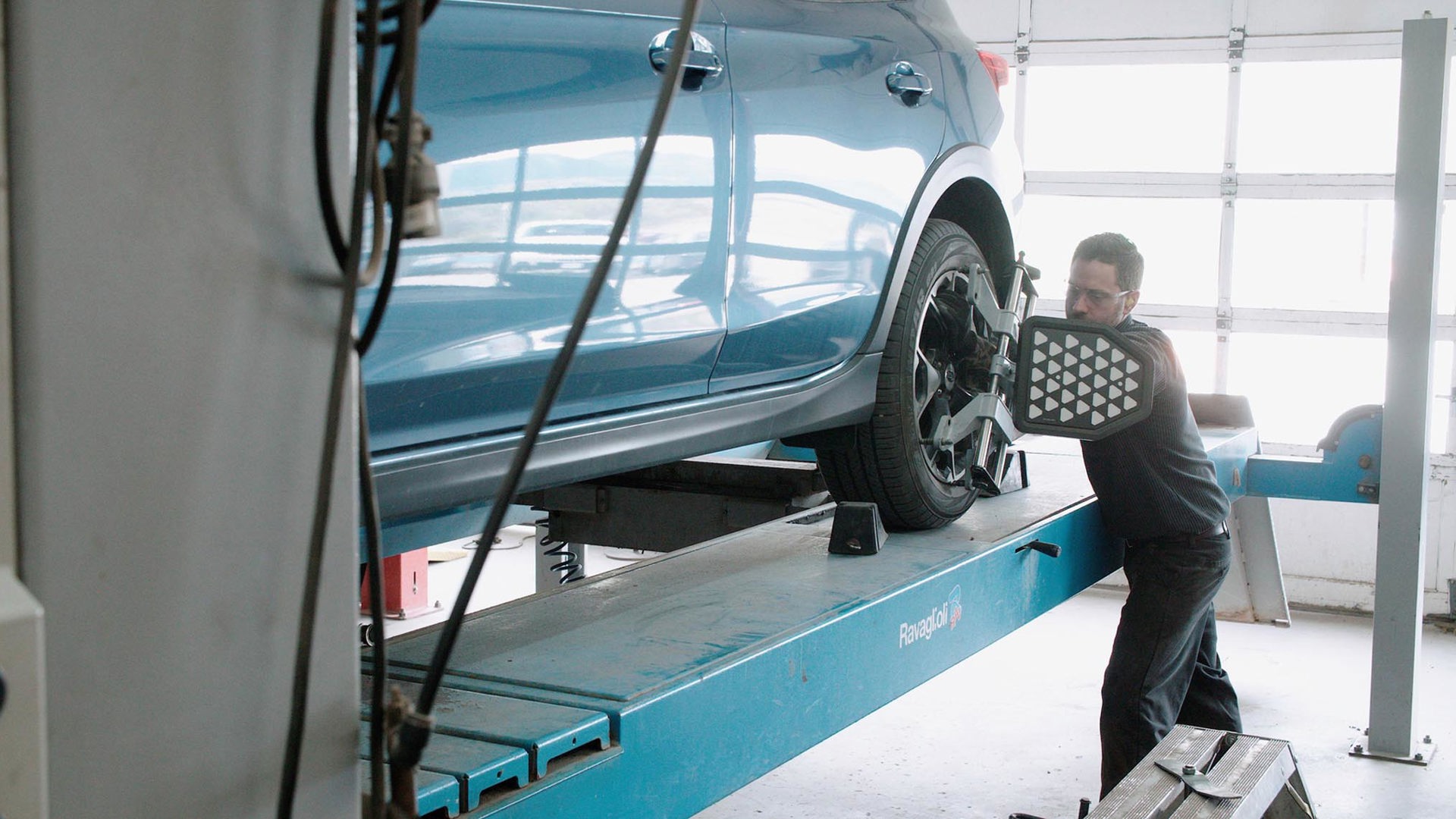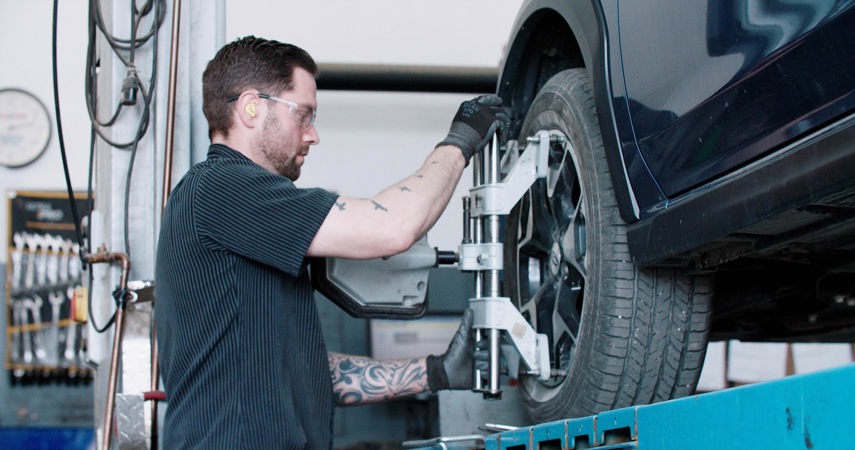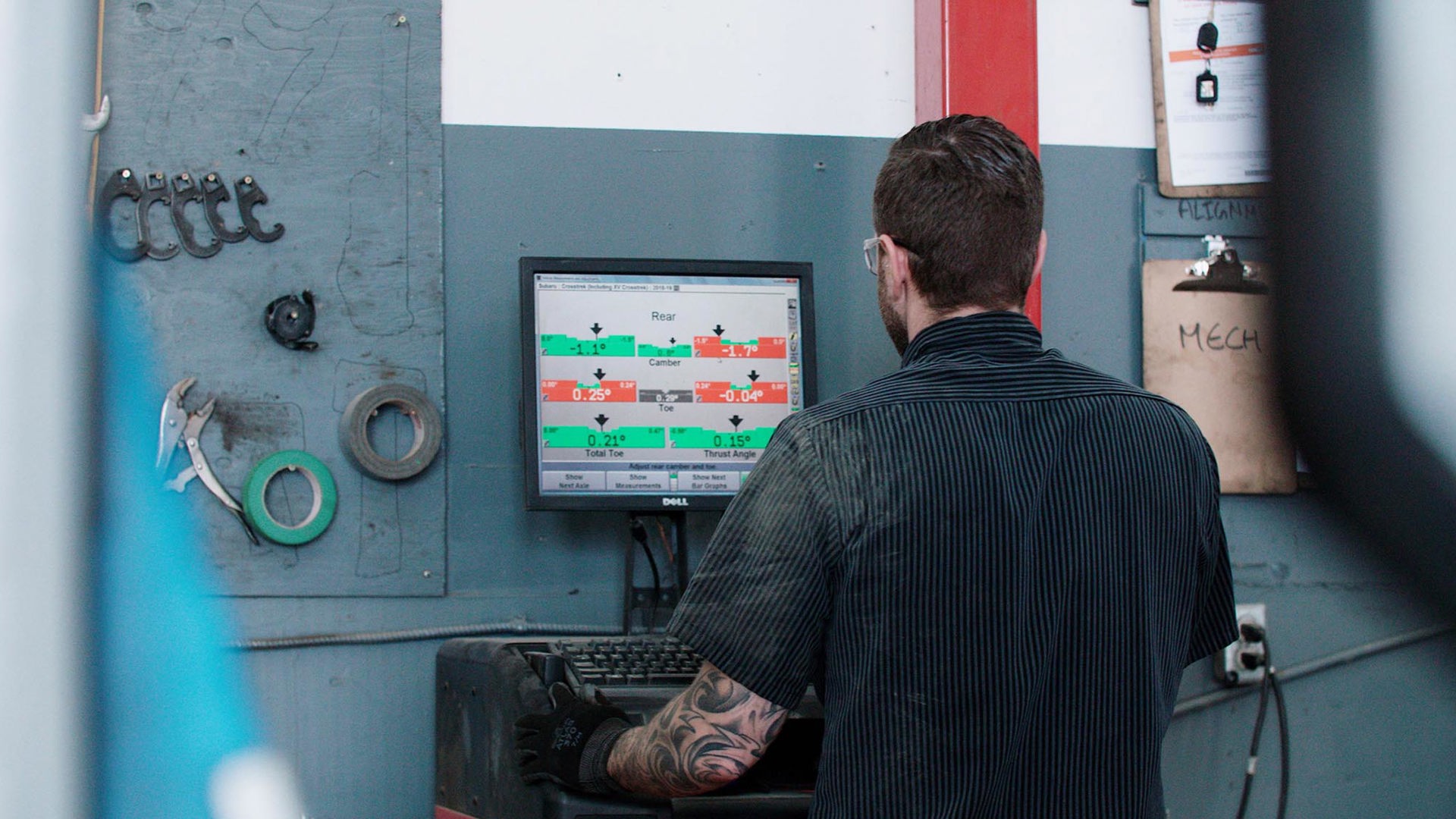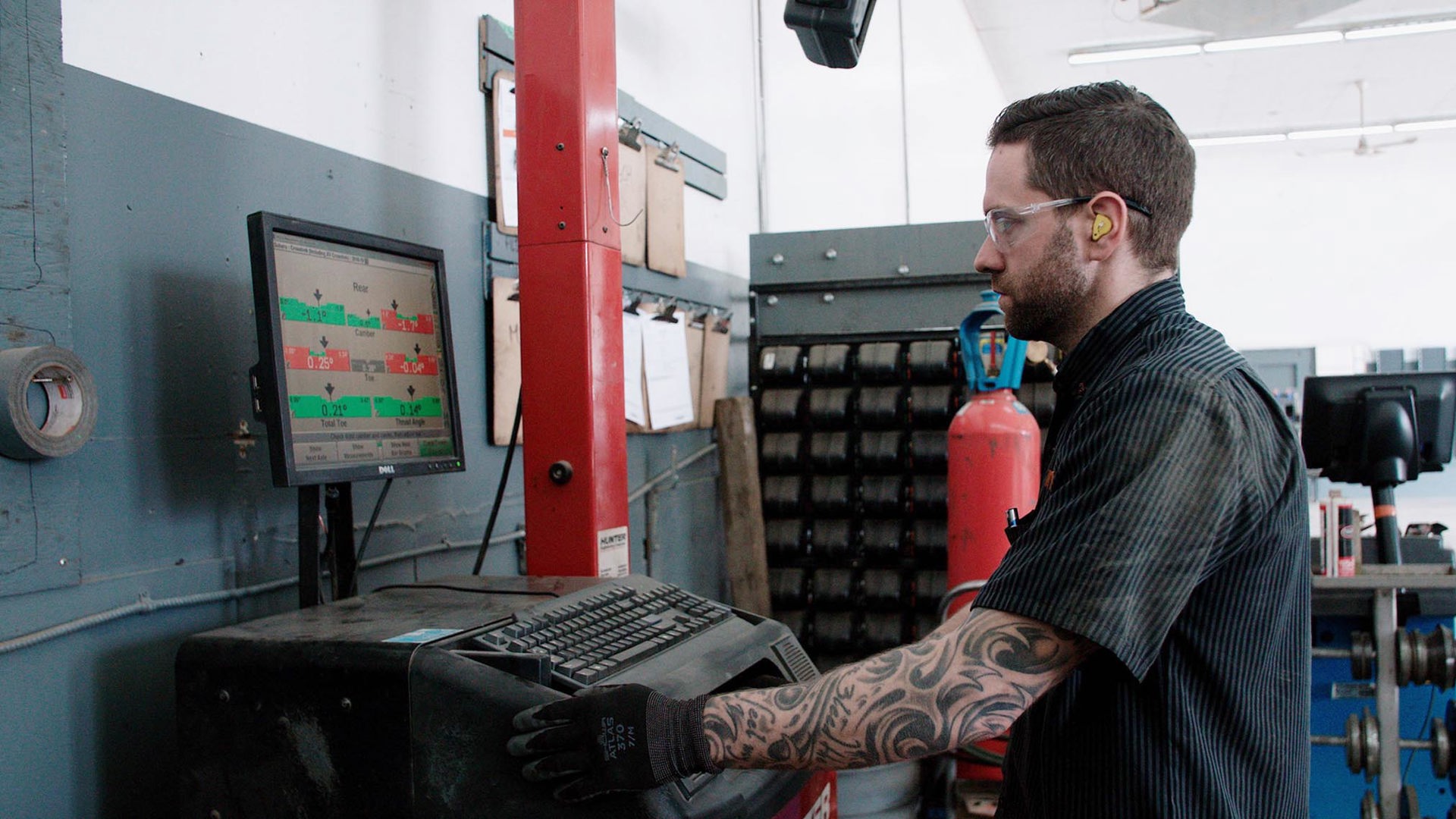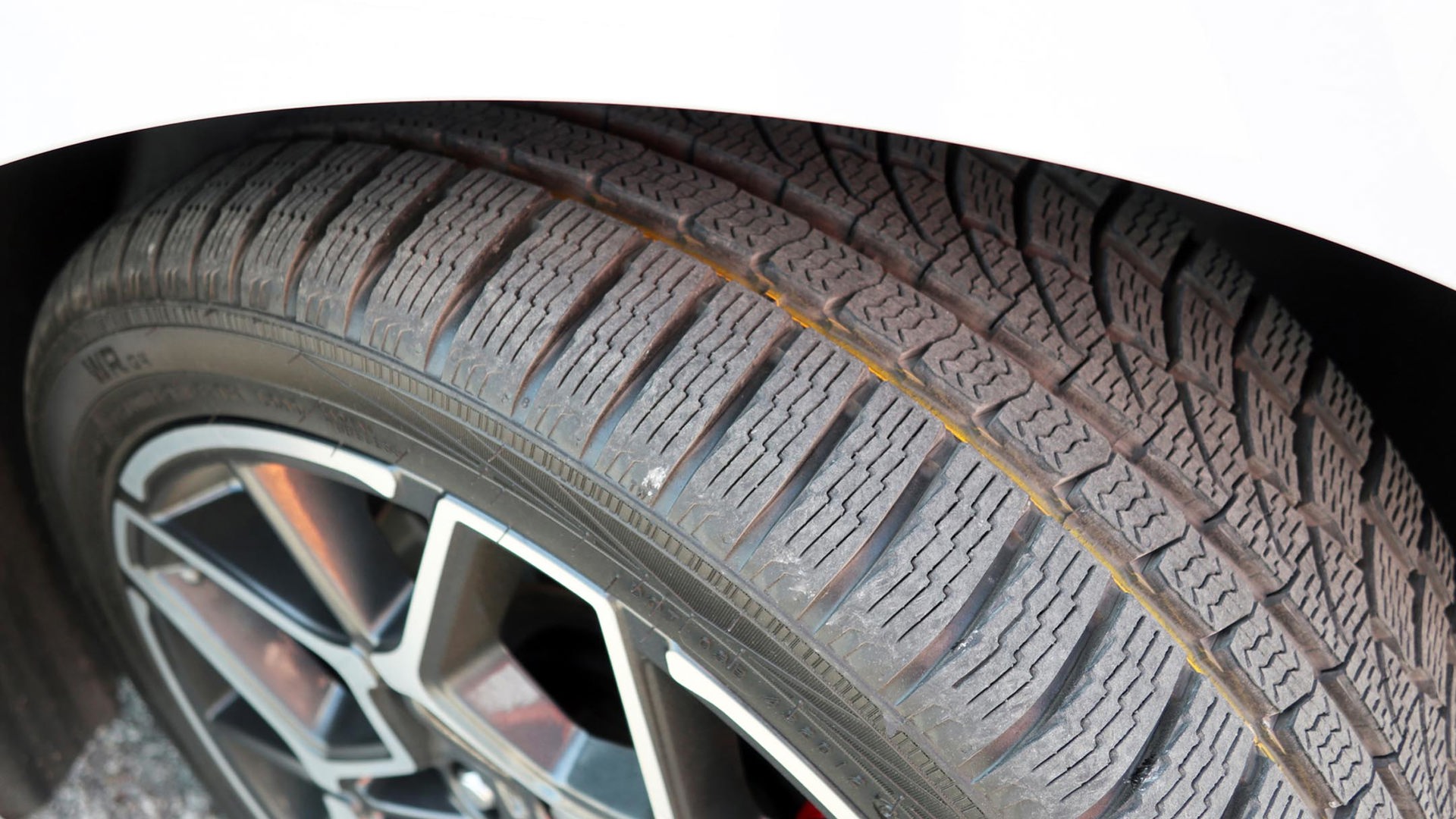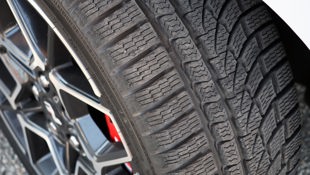All you want is a set of new tires, but now the shop is recommending an alignment. For that matter, the shop often wants to check the alignment even though you’re only there for a scheduled maintenance visit. They must just be looking for creative ways to pad the bill with unnecessary procedures, right?
As it turns out, they’re not. Misalignment is surprisingly common, and it can result in premature tire wear, increased fuel consumption, and reduced handling capability. It also tends to come on gradually, so you may not notice there’s an issue until you need to replace a set of tires earlier than expected.
I experienced it firsthand recently at an event set up by Kal Tire. I drove two identical vehicles through a closed course, on identical sets of tires set to the same recommended pressure. One was aligned to the auto manufacturer’s specifications, while the other was out of alignment.
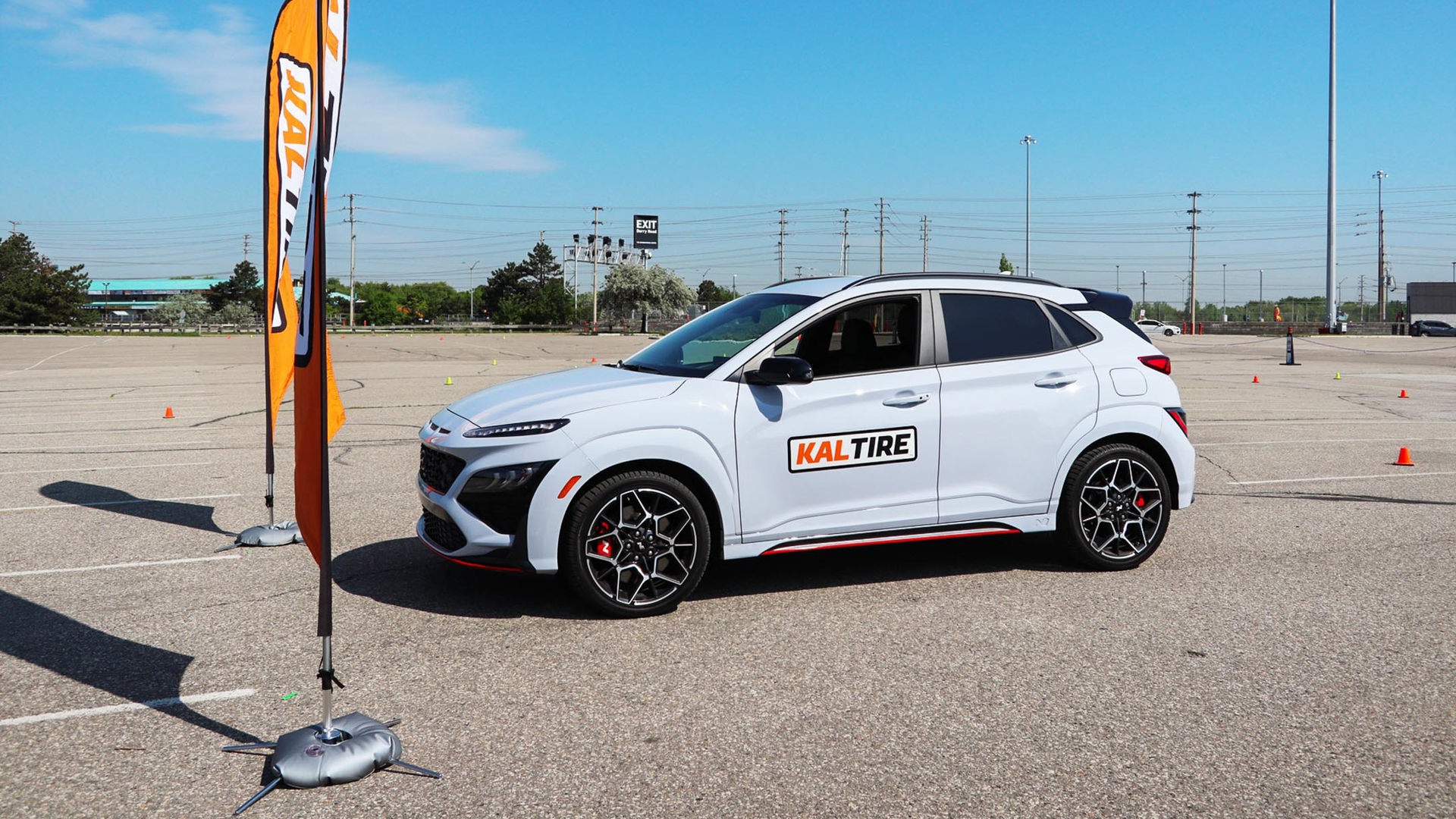
I wasn’t told which car was which, but it turned out I started in the properly aligned car. It rode as it should, with nimble feel to the steering, smooth handling around corners, and straight tracking when I took my hands off the wheel. The second car pulled slightly to one side in a straight line, but I really noticed the difference on the turns. It took more effort to turn the wheel around the corners, and the steering felt dull and sluggish. When both cars were checked with an on-site alignment machine to show me, I’d correctly identified the one with an issue.
“About 60 per cent of the vehicles we check are out of alignment,” said Tim Orpen, Mechanical Program Manager for Kal Tire. “We recommend checking it once a year, or during the winter/spring tire changeover, and always have it checked when you get new tires so you’re protecting your investment. Most places will provide the check at no charge.”
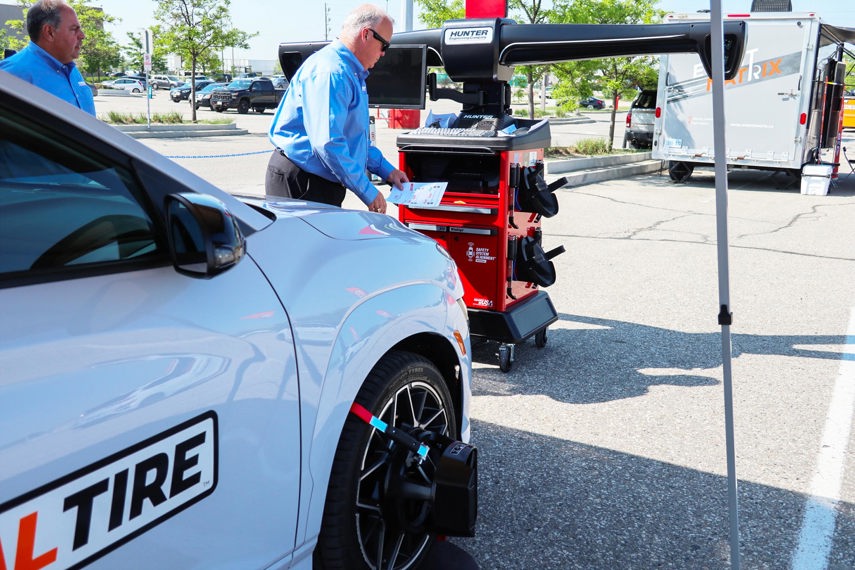
An alignment check involves measuring three adjustments, using an electronic machine. The toe is how straight your tires (and wheels, of course) point ahead. Camber is how much the top of the tire leans in or out from centre; while caster is the angle of the tire in relation to the vehicle’s steering and suspension components.
Toe and caster can be adjusted during the alignment, but on many vehicles, camber can’t be altered. If the camber measurement is out, it’s usually because a suspension or steering component has been damaged, likely by hitting a curb or pothole, and that item will need to be repaired or replaced.
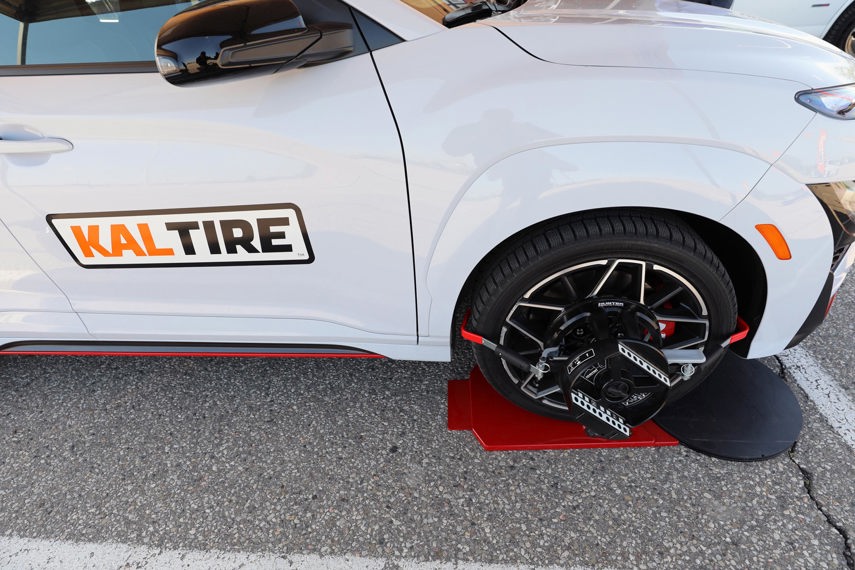
You’re least likely to notice toe issues when you’re driving, Orpen said, but it’s the most common of the three to be misaligned. Possible hints that your vehicle is out of alignment can include pulling to one side, front-end shimmy after you go over a bump, or the steering wheel isn’t straight. If it’s really out of whack, it could potentially affect some of the vehicle’s high-tech safety assist features, such as the lane-centring function that’s often included with adaptive cruise control; or it could affect braking and your ability to properly control the vehicle in a panic stop.
Misalignment also shows up as uneven or premature wear on your tires. The two sets used during the demonstration only had 200 kilometres on them, but the misaligned set was already showing wear on the shoulder. According to the stats, for every degree a vehicle is out of alignment, the wear is equivalent to dragging a tire sideways for 17.5 metres for each kilometre driven forward.
Left: properly aligned tire. Right: misaligned tire – note wear on shoulder.
“Dragging” a tire this way also affects its rolling resistance – the amount of energy required to move it along the road – which in turn affects fuel economy. Even if the tire is inflated to its recommended pressure (since under-inflated tires also use more fuel), a misaligned vehicle could have its fuel efficiency reduced by as much as 7 per cent.
So why does your vehicle go out of alignment? It can happen suddenly, as with those aforementioned potholes or hard curb strikes, but it’s mostly a gradual process. All those road cracks and bumps, road debris, snowbanks, brushing against the curb when parking, and component wear all contribute to the problem. You get used to how the car feels as it slowly but progressively gets worse, and many vehicles are engineered to insulate you from road imperfections in the name of comfort, so you might not notice until it’s really out of alignment. Getting it checked regularly can catch issues you may not realize you have. If alignment-related tire wear is only in its earliest stages, fixing the issue can result in the tire now wearing fairly evenly, without the need for premature replacement.
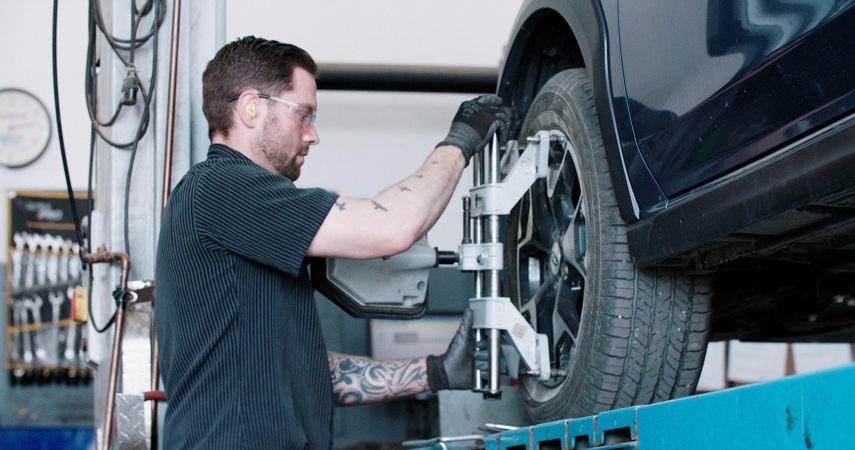
While prices depend on the shop and the vehicle, alignments generally run from about $125 to $200. Granted, no one wants to pay that, but it can potentially save much more money down the road if you have to replace your tires before you normally would, or if you chew up more fuel, and we all know what that costs these days. An alignment isn’t an unnecessary add-on, but a maintenance item that can be just as important as regular oil changes or brake inspections when it comes to preventing costlier problems later on.
